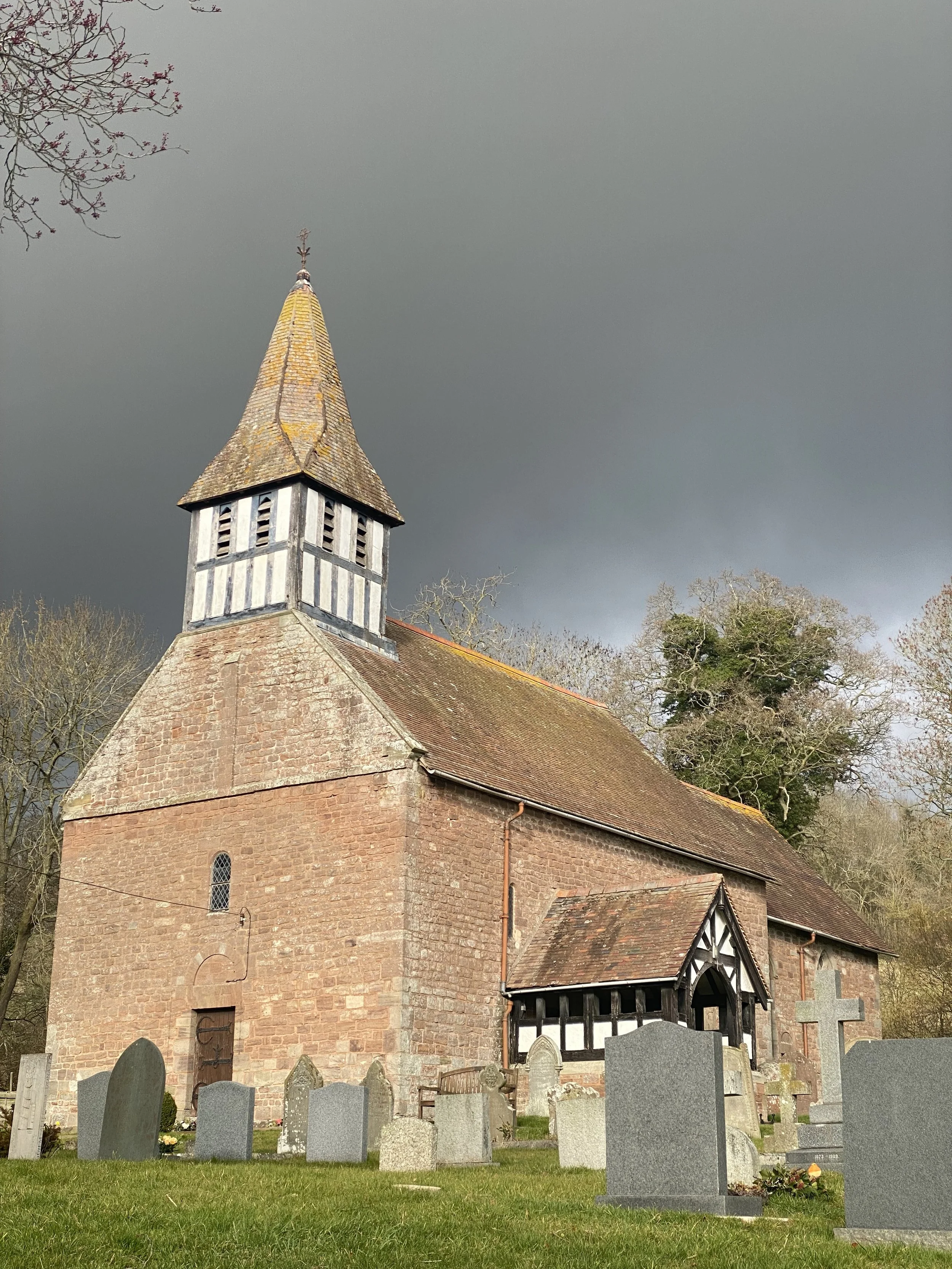An elegiac pondering in God’s acre
I am crouched down in the grounds of one of Herefordshire’s many historically significant parish churches watching a slow worm until it hastily withdraws from its sunbathing spot – thanks to me.
Castle Frome church dates back to the Normans and is an ecclesiastical gem. It comes with a wraparound churchyard, a fine yew tree and an intriguing green lane that skirts the bounds and then fades away: a remnant of a landscape since lost. The graves are well kept, but this is not a churchyard excessively shorn and clipped. A large swathe of the grounds is left wild, mature ivy-cloaked trees mark the church boundary and, in spring, cowslips add a flush of yellow to the grass between the graves. It is also a good spot for slow worm fans.
The church sits almost alone on a slope above the River Frome, with a view captured perfectly in the words of the19th century local poet, Elizabeth Barrett Browning: 'hills, vales, woods, netted in a silver mist, farm, granges, doubled up among the hills, cattle grazing in the watered vales, and cottage-chimneys smoking from the woods, and cottage-gardens smelling everywhere, confused with smell of orchards’. Little has changed.
The church itself is a masterpiece of 12th century architecture and its Norman font, the work of the Hereford School of Carvers, is so exceptional that it was once borrowed by the British Museum – and made the cover of the exhibition’s brochure.
There is a poignancy to my visit. Not far from the church gate stands a silhouette of a First World War soldier, powerfully and silently symbolising the young men from this small village who went to fight, never to return. Close by, a homemade red poppy stands tall: a heartfelt tribute from a small community that has not forgotten.
I stay a while and soak up the tranquillity of the churchyard, yet unable to extinguish thoughts of war and wretchedness. The futility of war. The current war in Europe and indeed elsewhere. My disposition is not helped seeing the distant Black Mountains enveloped in a sombre bank of inclement weather heading my way. The sun is fading fast and overhead a wake of buzzards mew a lament.
To lift my mood, I head inside the church. I glance at the Visitors’ Book. The roll call of people visiting this church is not quite what you would expect for a tiny church in rural Herefordshire. Many come to see the Norman font of course – it is well-documented, and its popularity is not surprising. What is rather more atypical is the number of visitors from the state of Utah in the USA. They come, often as a coach party, because their roots can be traced back to this small parish.
The backstory is well worth sharing. In 1840, at a time of great economic depression, a Mormon missionary arrived in this area of Herefordshire. Through his preaching, he converted many of the local farm workers to the Mormon faith, baptising them in a farm pond on the hill above the church. Facing the alternative of a life in abject poverty and potential starvation, it is not difficult to see why forty people from this tiny parish alone left to chase the American dream, their sea crossing paid for by a local farmer who sold his farm and joined them. Judging by the number of descendants who visit, they perhaps made a wise decision.
As I leave, I notice a couple of parishioners tending a grave. I contemplate the path their lives might have taken if their ancestors too had decided to jump ship and follow that missionary west.

